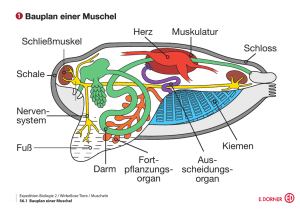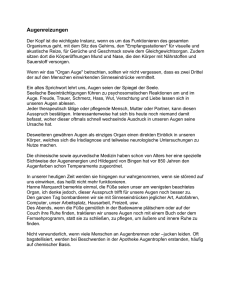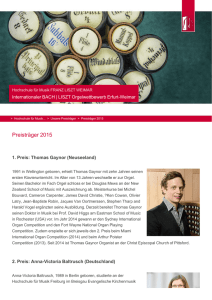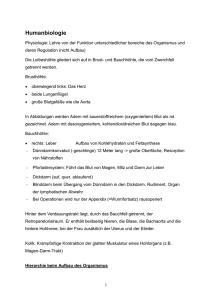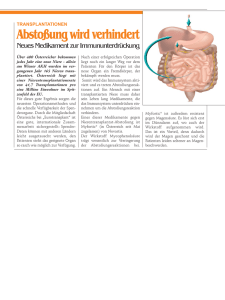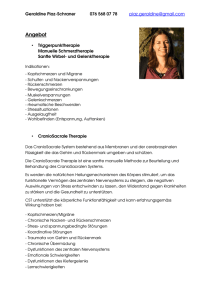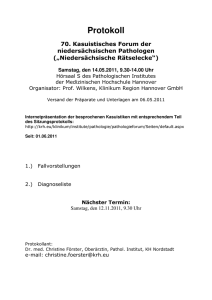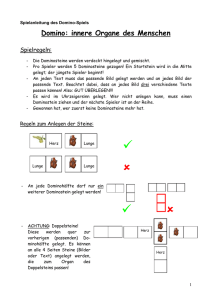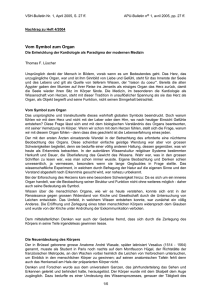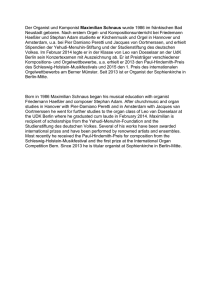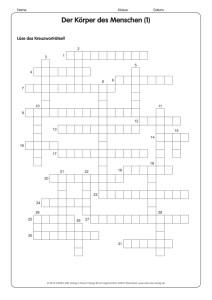Vorwort zu PB 5252
Werbung
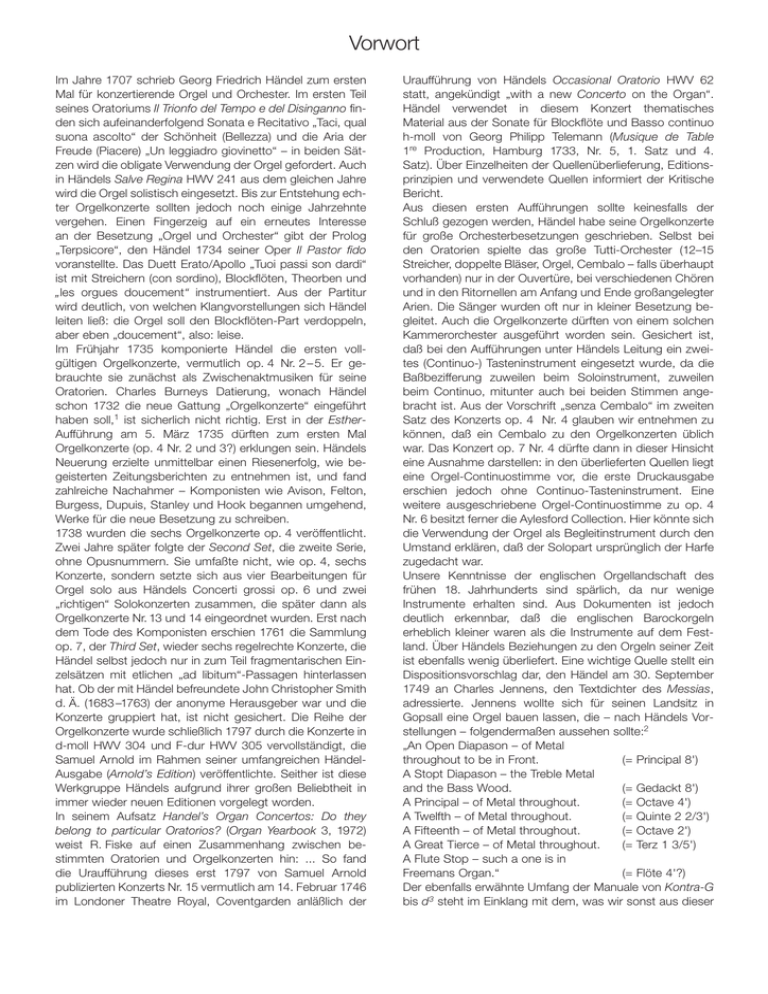
Vorwort Im Jahre 1707 schrieb Georg Friedrich Händel zum ersten Mal für konzertierende Orgel und Orchester. Im ersten Teil seines Oratoriums Il Trionfo del Tempo e del Disinganno finden sich aufeinanderfolgend Sonata e Recitativo „Taci, qual suona ascolto“ der Schönheit (Bellezza) und die Aria der Freude (Piacere) „Un leggiadro giovinetto“ – in beiden Sätzen wird die obligate Verwendung der Orgel gefordert. Auch in Händels Salve Regina HWV 241 aus dem gleichen Jahre wird die Orgel solistisch eingesetzt. Bis zur Entstehung echter Orgelkonzerte sollten jedoch noch einige Jahrzehnte vergehen. Einen Fingerzeig auf ein erneutes Interesse an der Besetzung „Orgel und Orchester“ gibt der Prolog „Terpsicore“, den Händel 1734 seiner Oper Il Pastor fido voranstellte. Das Duett Erato/Apollo „Tuoi passi son dardi“ ist mit Streichern (con sordino), Blockflöten, Theorben und „les orgues doucement“ instrumentiert. Aus der Partitur wird deutlich, von welchen Klangvorstellungen sich Händel leiten ließ: die Orgel soll den Blockflöten-Part verdoppeln, aber eben „doucement“, also: leise. Im Frühjahr 1735 komponierte Händel die ersten vollgültigen Orgelkonzerte, vermutlich op. 4 Nr. 2 – 5. Er gebrauchte sie zunächst als Zwischenaktmusiken für seine Oratorien. Charles Burneys Datierung, wonach Händel schon 1732 die neue Gattung „Orgelkonzerte“ eingeführt haben soll,1 ist sicherlich nicht richtig. Erst in der EstherAufführung am 5. März 1735 dürften zum ersten Mal Orgelkonzerte (op. 4 Nr. 2 und 3?) erklungen sein. Händels Neuerung erzielte unmittelbar einen Riesenerfolg, wie begeisterten Zeitungsberichten zu entnehmen ist, und fand zahlreiche Nachahmer – Komponisten wie Avison, Felton, Burgess, Dupuis, Stanley und Hook begannen umgehend, Werke für die neue Besetzung zu schreiben. 1738 wurden die sechs Orgelkonzerte op. 4 veröffentlicht. Zwei Jahre später folgte der Second Set, die zweite Serie, ohne Opusnummern. Sie umfaßte nicht, wie op. 4, sechs Konzerte, sondern setzte sich aus vier Bearbeitungen für Orgel solo aus Händels Concerti grossi op. 6 und zwei „richtigen“ Solokonzerten zusammen, die später dann als Orgelkonzerte Nr. 13 und 14 eingeordnet wurden. Erst nach dem Tode des Komponisten erschien 1761 die Sammlung op. 7, der Third Set, wieder sechs regelrechte Konzerte, die Händel selbst jedoch nur in zum Teil fragmentarischen Einzelsätzen mit etlichen „ad libitum“-Passagen hinterlassen hat. Ob der mit Händel befreundete John Christopher Smith d. Ä. (1683 –1763) der anonyme Herausgeber war und die Konzerte gruppiert hat, ist nicht gesichert. Die Reihe der Orgelkonzerte wurde schließlich 1797 durch die Konzerte in d-moll HWV 304 und F-dur HWV 305 vervollständigt, die Samuel Arnold im Rahmen seiner umfangreichen HändelAusgabe (Arnold’s Edition) veröffentlichte. Seither ist diese Werkgruppe Händels aufgrund ihrer großen Beliebtheit in immer wieder neuen Editionen vorgelegt worden. In seinem Aufsatz Handel’s Organ Concertos: Do they belong to particular Oratorios? (Organ Yearbook 3, 1972) weist R. Fiske auf einen Zusammenhang zwischen bestimmten Oratorien und Orgelkonzerten hin: ... So fand die Uraufführung dieses erst 1797 von Samuel Arnold publizierten Konzerts Nr. 15 vermutlich am 14. Februar 1746 im Londoner Theatre Royal, Coventgarden anläßlich der Uraufführung von Händels Occasional Oratorio HWV 62 statt, angekündigt „with a new Concerto on the Organ“. Händel verwendet in diesem Konzert thematisches Material aus der Sonate für Blockflöte und Basso continuo h-moll von Georg Philipp Telemann (Musique de Table 1re Production, Hamburg 1733, Nr. 5, 1. Satz und 4. Satz). Über Einzelheiten der Quellenüberlieferung, Editionsprinzipien und verwendete Quellen informiert der Kritische Bericht. Aus diesen ersten Aufführungen sollte keinesfalls der Schluß gezogen werden, Händel habe seine Orgelkonzerte für große Orchesterbesetzungen geschrieben. Selbst bei den Oratorien spielte das große Tutti-Orchester (12–15 Streicher, doppelte Bläser, Orgel, Cembalo – falls überhaupt vorhanden) nur in der Ouvertüre, bei verschiedenen Chören und in den Ritornellen am Anfang und Ende großangelegter Arien. Die Sänger wurden oft nur in kleiner Besetzung begleitet. Auch die Orgelkonzerte dürften von einem solchen Kammerorchester ausgeführt worden sein. Gesichert ist, daß bei den Aufführungen unter Händels Leitung ein zweites (Continuo-) Tasteninstrument eingesetzt wurde, da die Baßbezifferung zuweilen beim Soloinstrument, zuweilen beim Continuo, mitunter auch bei beiden Stimmen angebracht ist. Aus der Vorschrift „senza Cembalo“ im zweiten Satz des Konzerts op. 4 Nr. 4 glauben wir entnehmen zu können, daß ein Cembalo zu den Orgelkonzerten üblich war. Das Konzert op. 7 Nr. 4 dürfte dann in dieser Hinsicht eine Ausnahme darstellen: in den überlieferten Quellen liegt eine Orgel-Continuostimme vor, die erste Druckausgabe erschien jedoch ohne Continuo-Tasteninstrument. Eine weitere ausgeschriebene Orgel-Continuostimme zu op. 4 Nr. 6 besitzt ferner die Aylesford Collection. Hier könnte sich die Verwendung der Orgel als Begleitinstrument durch den Umstand erklären, daß der Solopart ursprünglich der Harfe zugedacht war. Unsere Kenntnisse der englischen Orgellandschaft des frühen 18. Jahrhunderts sind spärlich, da nur wenige Instrumente erhalten sind. Aus Dokumenten ist jedoch deutlich erkennbar, daß die englischen Barockorgeln erheblich kleiner waren als die Instrumente auf dem Festland. Über Händels Beziehungen zu den Orgeln seiner Zeit ist ebenfalls wenig überliefert. Eine wichtige Quelle stellt ein Dispositionsvorschlag dar, den Händel am 30. September 1749 an Charles Jennens, den Textdichter des Messias, adressierte. Jennens wollte sich für seinen Landsitz in Gopsall eine Orgel bauen lassen, die – nach Händels Vorstellungen – folgendermaßen aussehen sollte:2 „An Open Diapason – of Metal throughout to be in Front. (= Principal 8') A Stopt Diapason – the Treble Metal and the Bass Wood. (= Gedackt 8') A Principal – of Metal throughout. (= Octave 4') A Twelfth – of Metal throughout. (= Quinte 2 2/3') A Fifteenth – of Metal throughout. (= Octave 2') A Great Tierce – of Metal throughout. (= Terz 1 3/5') A Flute Stop – such a one is in Freemans Organ.“ (= Flöte 4'?) Der ebenfalls erwähnte Umfang der Manuale von Kontra-G bis d3 steht im Einklang mit dem, was wir sonst aus dieser Zeit kennen. Zu Anfang seines Briefes schlägt Händel ausdrücklich keine Zungenstimmen vor, „... without Reed Stops, which I have omitted, because they are continually wanting to be tuned, which in the Country is very inconvenient, ...“ („... weil sie stets und ständig nachgestimmt werden müssen, was auf dem Lande sehr umständlich ist, ...“). Jennens’ Orgel gehört übrigens zu den glücklicherweise erhaltenen Instrumenten: sie hat in der Kirche von Great Packington (Warwickshire) Platz gefunden, wobei sie allerdings bauliche Änderungen erfuhr. So wurde z. B. die Stimmung durch Kürzen der Pfeifen um einen halben Ton erhöht. Einen zweiten Hinweis auf Händels Orgelinstrumente gibt die Notiz der London Daily Post vom 27. März 1735, die über die Einweihung einer neuen Orgel im Theatre Royal anläßlich einer Aufführung des Oratoriums Deborah berichtet: „... a large new Organ, which is remarkable for its Variety of curious Stops; being a new Invention, and a great Improvement of that Instrument.“ („... eine neue große Orgel, die wegen ihrer vielen interessanten Register bemerkenswert ist. Das ist eine neue Erfindung und gleichzeitig eine erhebliche Verbesserung dieses Instruments.“)3 Op. 7 Nr. 1 benötigt als einziges Werk aus dieser Sammlung eine zweimanualige Orgel mit Pedal. Allerdings ist kaum anzunehmen, daß bei der Uraufführung im Lincoln’s Inn Fields Theatre ein so großes Instrument zur Verfügung stand – es dürfte sich dort eher um eine zweimanualige Orgel mit angehängtem Pedal gehandelt haben. Die vielen „ad libitum“-notierten Passagen in op. 7 legen nahe, daß sich Händel auf seine eigenen improvisatorischen Fähigkeiten verließ und nur dann exakt notierte, wenn es unbedingt notwendig war. Burney konstatierte in dem bereits zitierten Account: „... At last, however, he [Handel] rather chose to trust to his inventive powers, than those of reminiscence: for, giving the band only the skeleton, or ritornels of each movement, he played all the solo parts ex tempore, while the other instruments left him ad libitum; waiting for the signal of a shake before they played such fragments of symphony as they found in their books.“ („... jedoch entschied er [Händel] sich schließlich auch, eher seinen improvisatorischen Fähigkeiten zu vertrauen als der Erinnerung: er spielte nämlich, indem er den Begleitern nur das Gerüst oder die Ritornelle eines jeden Satzes gab, alle Solostellen ex tempore, während ihn die anderen Instrumente gewähren ließen. Sie warteten auf einen Triller als Signal, um die Werkteile zu spielen, die sie in ihren Stimmheften fanden.“)4 Von einem anderen Zeitzeugen, dem Musikforscher John Hawkins (1719 –1789), ist folgender Bericht überliefert: „When he [Handel] gave a Concerto, his method in general was to introduce it with a voluntary movement on the diapasons, which stole on the ear in a slow and solemn progression; the harmony close wrought, and as full as could possibly be expressed; the passages concatenated with stupendous art, the whole at the same time being perfectly intelligible, and carrying the appearance of great simplicity. This kind of prelude was succeeded by the concerto itself, which he executed with a degree of spirit and firmness that no one even pretended to equal.“ („Wenn er [Händel] ein Konzert gab, begann er meist mit einer Orgelimprovisation in Prinzipalregistrierung, die sich mit getragenen feierlichen Fortschreitungen ins Ohr schmiegte. Die Akkorde folgten sehr dicht aufeinander, sie wurden so vollgriffig wie nur möglich gespielt. Die verschiedenen Passagen waren mit erstaunlicher Kunstfertigkeit miteinander verwoben, gleichzeitig war das Werk vollkommen übersichtlich disponiert und erweckte sogar den Eindruck großer Einfachheit. Auf ein solches Präludium folgte das eigentliche Konzert, das er mit unvergleichlichem Geist und großer Kraft ausführte.“)5 Solch enthusiastische Berichte über Händels geniale ad hoc-Gestaltungskunst können heute bei der Neuherausgabe leicht entmutigen, wenn man die berechtigte Bitte des Verlags um Realisierungsvorschläge der „ad libitum“Stellen erfüllen möchte. Aus diesem Grund sind die Ausarbeitungen lediglich in der separaten Orgelstimme in Kleinstich enthalten. Es sei an dieser Stelle betont, daß es sich stets nur um eine der vielen denkbaren Lösungsmöglichkeiten handelt, die eigentlich eher zum eigenen Gestalten anregen müßte. In keinem Fall soll damit eine Festlegung erfolgen. Händel hat gewiß nie zweimal das Gleiche gespielt, und der Herausgeber bedauert sehr, daß die Vielgestaltigkeit der Improvisationsvarianten, die bei den Schallplattenaufnahmen der Händel-Orgelkonzerte mit The Amsterdam Baroque Orchestra (Erato ECD 88136) entstanden sind, in einer Notenausgabe nicht adäquat vermittelt werden kann. Selbstverständlich gibt es über die „ad libitum“-Stellen hinaus, wie in der Musik des Barock üblich, viele Möglichkeiten, den Solopart – und die Begleitstimmen natürlich auch – durch Verzierungen zu bereichern. Die Sänger und Instrumentalisten des 18. Jahrhunderts haben nur selten den Notentext unverändert akzeptiert, sondern die Komposition eher durch ihr eigenes Stilempfinden und ihre technischen Möglichkeiten persönlich geprägt. Einzelne Trillerzeichen sind in Klammern an den Stellen ergänzt, wo Triller wirklich unbedingt nötig sind. Es gibt darüber hinaus aber noch erheblich mehr Möglichkeiten, sinnvoll Verzierungen anzubringen. Übrigens läßt sich aus ausgezierten Händel-Arien, die durch einen glücklichen Zufall erhalten sind, dazu vieles lernen. Auch geben Musikautomaten, wie die Orgel der Colt-Collection aus der zweiten Hälfte des 18. Jahrhunderts, wichtige Fingerzeige auf die Händelsche Aufführungspraxis. Obwohl sich Tempo und Registrierung bei diesem Instrument variabel einschalten lassen, sind in den Aufzeichnungen kompletter Orgelkonzerte wunderbare Verzierungen und sogar eine vollständige Kadenz zu hören. Dem an lebendiger und dennoch stilgerechter Interpretation Interessierten soll mit der vorliegenden Ausgabe keine bestimmte Ausführung vorgeschrieben, sondern ein kunstreiches, weites Feld zu eigener musikalischer Gestaltung eröffnet werden. Für die Mitarbeit an dieser Ausgabe sei Frau Dr. Minke Hylarides gedankt. Bussum, Frühjahr 1999 Ton Koopman 1 Charles Burney, An account of the musical performances in Westminster-Abbey, and the Pantheon, London 1785. Reprint Amsterdam 1964, S. 23 2 Vgl. Händel-Handbuch, Bd. 4; Kassel und Leipzig 1985, S. 431 3 Händel-Handbuch, a. a. O., S. 252 4 Charles Burney, a. a. O., S. 30 5 John Hawkins, A General History of the Science and Practice of Music. London 1776, S. 912 Preface George Frideric Handel first wrote for organ solo and orchestra in 1707, in the first section of his oratorio Il trionfo del Tempo e del Disinganno. There, two pieces call for organ obbligato, the Sonata e Recitativo “Taci, qual suona ascolto” of Beauty (Bellezza) and the Aria of Pleasure (Piacere) “Un leggiadro giovinetto”, which follows it immediately. The organ is also used as a solo instrument in Handel’s Salve Regina HWV 241 from the same year. However, several decades were to elapse before Handel composed his first true organ concertos. The prologue “Terpsicore”, which Handel placed at the head of his opera Il Pastor fido in 1734, hints at the composer’s renewed interest in the instrumental combination of organ and orchestra: the duet Erato / Apollo “Tuoi passi son dardi” is scored for strings (con sordino), recorders, theorbos and “les orgues doucement”. A glance at the score makes it clear that Handel intended the organ to double the recorder part, but “doucement” (softly). Handel composed his first authentic organ concertos, presumably Op. 4 Nos. 2–5, in the spring of 1735. They were used at first as entr’actes for his oratorios. Charles Burney is certainly wrong in dating Handel’s introduction of the new genre of the “organ concerto” in 1732.1 It was most likely on 5 March 1735, at the first performance of Esther, that Handel’s first organ concertos were heard (possibly Op. 4 Nos. 2 and 3?). Handel’s innovation was promptly greeted with great enthusiasm, as can be inferred from the encomiums in the press, and it found numerous imitators: composers like Avison, Felton, Burgess, Dupuis, Stanley and Hook immediately began to write works for this new instrumental combination. The six Organ Concertos Op. 4 were published in 1738. The Second Set, without opus numbers, followed two years later. Unlike Op. 4, it did not contain six concertos, but four organ solo arrangements from Handel’s Concerti grossi Op. 6, and two “authentic” solo concertos which were later designated as the Organ Concertos Nos. 13 and 14. The Third Set listed as Opus 7, was published only in 1761, thus after the composer’s death. This collection again comprises six genuine concertos which, however, were left by Handel in partially incomplete single movements with numerous “ad libitum” passages. It is not known whether it was Handel’s friend and amanuensis John Christopher Smith sen. (1683–1763) who anonymously prepared them for edition. The series of Handel’s organ concertos was finally completed in 1797, when Samuel Arnold published the Concertos in D minor HWV 304 and in F major HWV 305 in his comprehensive Handel edition (Arnold’s Edition). Since then, Handel’s organ concertos have been issued in a great number of new editions, which testify to their great popularity. In his essay Handel’s Organ Concertos: Do they belong to particular Oratorios? (Organ Yearbook 3, 1972), R. Fiske points to a connection between certain oratorios and organ concertos: Thus the Concerto No. 15 published by Samuel Arnold in 1797 only was most likely premiered on the occasion of the premiere of Handel’s Occasional Oratorio HWV 62 at the Theatre Royal, Coventgarden in London on 14th February 1746. It was announced “with a new Concerto on the Organ“. In this concerto, Handel uses thematic material from Georg Philipp Telemann’s Sonata for Recorder and Basso Continuo in B minor (Musique de Table 1re production, Hamburg 1733, No. 5, 1st and 4th movements). Information on the sources, the editorial principles and the sources used can be found in the “Kritische Bericht”. However, one must not conclude on the basis of these first performances that Handel conceived his organ concertos for a large orchestral body. Even in the oratorios, the large tutti orchestra (12–15 strings, double woodwinds, organ, harpsichord – if really existing) only played in the overture, at various choruses and in the ritornellos at the beginning and end of more elaborately written airs. The singers were often accompanied only by a few musicians. The organ concertos must also have been performed by a chamber orchestra. What we do know is that Handel, at the performances he conducted himself, used a second (continuo) keyboard instrument as well, since the bass figures occasionally appear beneath the solo instrument’s part, occasionally beneath the continuo and, at times, under both parts together. Judging from the indication “senza Cembalo” in the second movement of the Concerto Op. 4 No. 4, we feel that it is safe to assume that the use of a harpsichord during the performance of an organ concerto was perfectly normal. The Concerto Op. 7 No. 4 would then represent an exeption, for, although there is an organ continuo part in the surviving sources, the first printed edition was issued without a continuo keyboard instrument. A continuo part for the organ for Op. 4 No. 6 can be found in the Aylesford Collection. Here the use of the organ as an accompanying instrument might be explained by the fact that the solo part was originally conceived for the harp. We unfortunately know little about the organ in England at the beginning of the 18th century, since only few instruments have been preserved. However, contemporary sources clearly show that English Baroque organs were considerably smaller than similar instruments on the Continent. Little is known about Handel’s relationship to the organs of his time either. One important source is a proposal for an organ specification which he sent to Charles Jennens, the librettist of the Messiah, on 30 September 1749. Jennens wanted to have an organ built for his country residence in Gopsall, which – according to Handel –needed the following specification:2 “An Open Diapason – of Metal throughout to be in Front. (= Diapason 8') A Stopt Diapason – The Treble Metal and the Bass Wood. (= Stopped Diapason 8') A Principal – of Metal throughout. (= Octave 4') A Twelfth – of Metal throughout. (= Quinte 2 2/3') A Fifteenth – of Metal throughout. (= Octave 2') A Great Tierce – of Metal throughout. (= Tierce 1 3/5') A Flute Stop – such a one is in Freemans Organ.” (= Flute 4'?) The range of the manuals from contra G to d3, which Handel also indicated, also conforms to the range familiar to us from that time. At the beginning of his letter, Handel expressly advises against reed stops: “... without Reed Stops, which I have omitted, because they are continually wanting to be tuned, which in the Country is very inconvenient ...”. Jennens’ organ belongs to the few instruments which have survived to this day: It was finally reinstalled in the church of Great Packington (Warwickshire), whereby it had to be subjected to some structural modifications. For example, the pitch was raised a half-tone by way of shortening the pipes. Another indication regarding Handel and the organ is provided in a notice which appeared in the London Daily Post of 27 March 1735. Reporting about the inauguration of a new organ at the Theatre Royal on the occasion of a performance of the oratorio Deborah, the newspaper writes: “... a large new Organ, which is remarkable for its Variety of curious Stops; being a new Invention, and a great Improvement of that Instrument.”3 Opus 7 No. 1 is the only work in this collection which requires a two-manual organ with pedal. It can hardly be assumed that such a large instrument was found at the Lincoln’s Inn Fields Theatre when the concerto was performed first; this theatre most likely had an organ with two manuals and pull down pedals. The many passages notated “ad libitum” in Opus 7 suggest that Handel drew upon his own improvisational skills and notated the music with precision only when it was absolutely necessary. In his Account, from which we have already quoted, Burney observed: “... At last, however, he [Handel] rather chose to trust to his inventive powers, than those of reminiscence: for, giving the band only the skeleton, or ritornels of each movement, he played all the solo parts ex tempore, while the other instruments left him ad libitum; waiting for the signal of a shake before they played such fragments of symphony as they found in their books.”4 The following report has come down to us from another contemporary eye-witness, the music historian John Hawkins (1719 –1789): “When he [Handel] gave a Concerto, his method in general was to introduce it with a voluntary movement on the diapasons, which stole on the ear in a slow and solemn progression; the harmony close wrought, and as full as could possibly be expressed; the passages concatenated with stupendous art, the whole at the same time being perfectly intelligible, and carrying the appearance of great simplicity. This kind of prelude was succeeded by the concerto itself, which he executed with degree of spirit and firmness that no one even pretended to equal.” 5 Such vivid extolments of Handel’s brilliant improvisational talent unfortunately have a rather discouraging effect on the editor trying to comply with the publisher’s well-founded wish for the realization of the “ad libitum” passages. For this reason, only the separate organ part contains the editorial realization in small type, which, and we would like to underscore this, is always only one of many possible solutions and is intended to stimulate the performer’s own creative abilities. Since Handel himself most certainly never played the same thing twice, one should avoid at all costs attributing any kind of permanent validity to the editorial solutions presented here. The editor strongly regrets that the profusion and variety of the improvisational variants which grew out of the rehearsals for the recording of the Handel organ concertos with The Amsterdam Baroque Orchestra (Erato ECD 88136) cannot be adequately transmitted in a musical edition. But besides the “ad libitum” passages, there are many other possibilities of varying the solo part and the accompanying parts with embellishments, a common practice during the Baroque era. Rarely did 18th-century singers and instrumentalists perform the music exactly as written. They relied on their own feeling for style and on their technical resources to give the music their personal stamp. Trills have been added in brackets only where they are absolutely essential. However, it is also possible to add many other ornaments with discernment. Incidentally, much can be learned from various airs which Handel embellished himself and which have luckily survived to this day. And musical automatons such as the organ in the Colt Collection dating from the second half of the 18th century also provide important insights into Handel’s performance practice. Although the tempo and registration of this instrument can be variably regulated, the complete organ concertos preserved together with this instrument contain some enchanting embellishments and even an entire cadenza. Whoever values a dynamic and yet stylistically authentic interpretation of Handel’s organ concertos should consider this edition not as the “final word” on this piece, but as a guide to the broad field of creative possibilities open to every performer. We wish to thank Dr. Minke Hylarides for her cooperation on this edition. Bussum, Spring 1997 Ton Koopman 1 Charles Burney, An account of the musical performances in Westminster-Abbey, and the Pantheon. London 1785. Reprint Amsterdam 1964, p. 23 2 Cf. Händel-Handbuch, Vol. 4; Kassel and Leipzig 1985, p. 431 3 Händel-Handbuch, loc. cit., p. 252 4 Charles Burney, loc. cit., p. 30 5 John Hawkins, A General History of the Science and Practice of Music. London 1776, p. 912
